How to fish Bishops Run on the Welsh Dee at Llangollen

Table of Contents
Bishops Run Introduction
I’ve produced this trout and grayling fly fishing guide to share my knowledge on how to fish Bishops Run, which is directly below Horseshoe Falls on Llangollen-Maelor’s beat of the Welsh Dee.
Bishops Run is a streamy section of water flowing between the right bank and the islands in the centre of the weir-pool. Then, as the river bends to the east, it flows over a rock ledge into a very deep channel.
It’s a great place to fish for trout and grayling when the river is close to its summer level (ca. below 0.6m @Manley Hall gauge). Especially, when it’s hot during the summer because trout and grayling move into the streamy, oxygenated water from the deep channel below.
Fly Fishing for trout and grayling:
I have caught plenty of trout and grayling in Bishops Run using the main fly fishing techniques; especially when the river is low during the summer months.
Initially, the Welsh Dee flows south through Bishops Run before turning eastwards, but because, the valley is steep-sided the river is in the shade for most of the day. Making it a great place to fish on bright sunny days.
I only fish Bishops Run when the river level close summer level because above this level the river flows too quickly to fish it safely.
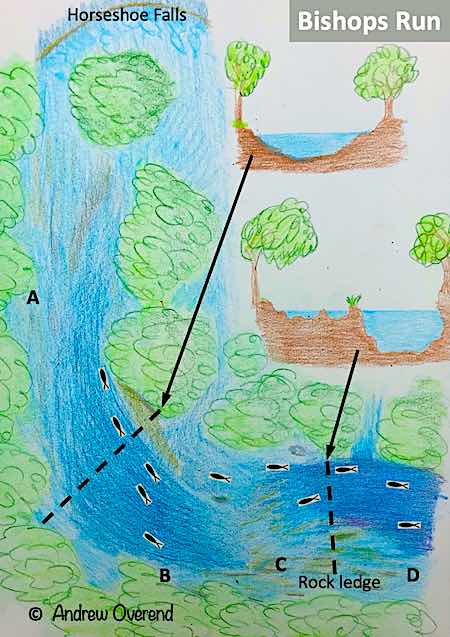
In this sketch of the Bishops Run, I’ve highlighted where I usually catch trout and grayling when the river is at its summer level.
In the fast riffle, zone A to B, trout tend to lie close to the trees on the wooded islands and toward the tail (B).
Grayling, however, move around in this section and can be found anywhere, even in the very shallow sections.
The other section I fish is the deep channel from C to B, which is not easy to access because you have to wade along the slippy rock ledge.
Trout and grayling lie in the fast water at the head of the channel and close to the drop-off zones on either side of the channel.
It’s difficult to fish Bishops Run from the tree-lined bank. Therefore, it’s necessary to wade down the shallow sections.
If you are not comfortable wading on a difficult riverbed, then fish another pool.
Fly fishing section A to B:
Fly fishing section A to B:
I normally start fishing this section from the bank at point (B) and fish my way upriver to (A) with the dry fly or a nymph suspended 4ft under a buoyant dry fly.
The aim is to cover the water from the near bank out to the island and catch any fish that would otherwise be spooked on wading the bank from point (A).
Just past the bench, I wade out a little to cover the strip of water close to the overhanging trees on the island, which often holds a few trout.
On reaching the head of the run (point A), I switch to either fishing a team of wet flies and/or spiders. Then fish my way back to point B, by casting the flies across to the far bank and allowing them to swing around to the dangle. This approach usually catches a few more trout and grayling.
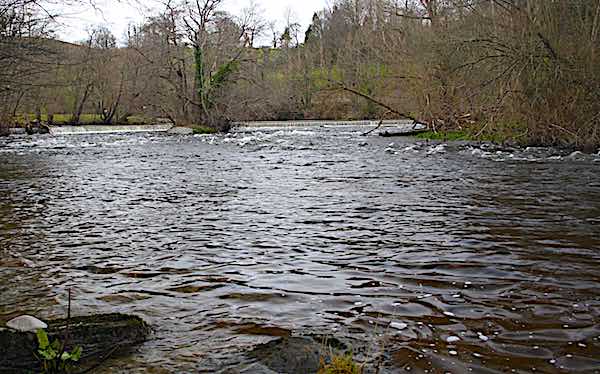
If the wet flies/spiders don’t produce any fish, I search the run again by fishing a team of nymphs on a French Leader close to the riverbed.

Fly fishing section C to D:
The deep channel below the fast run holds some nice grayling and trout but it’s difficult to access because it involves wading onto an uneven and slippy rock platform.
When fishing this section I start at point C and careful work my way downriver. If fish are rising, I will cover them with the dry fly or with a team of wet flies fished close to the surface.
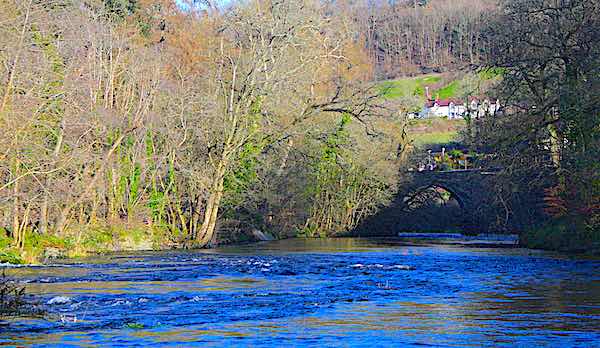
In the absence of risers, I search the depths of the channel by fishing nymphs suspended under a bung or buoyant dry fly.
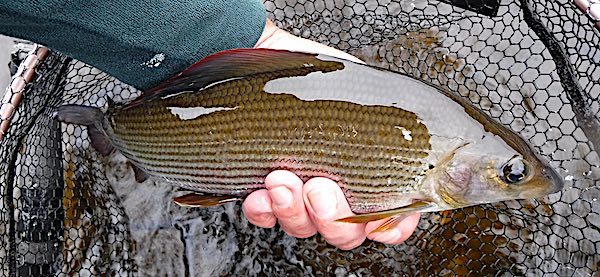
How my approach changes with the season:
Fly fishing Bishops Run in March:
The brown trout fishing season on the Welsh Dee starts on the 3rd of March. However, the weather in March is often more like winter than spring.
On mild days, hatches of large dark olives and March Browns usually start around 11 am and you will often spot trout picking them off as they drift through this pool. During these hatches, my approach is to target the rising fish with the dry fly (large dark olive or March Brown pattern).
For more information on the fly selection for fishing during March check out the following article:
Fly fishing in April:
Once April arrives, the weather usually starts to warm up and hatches of Large Dark Olives, March Brown, Grammon and other olives become more prevalent from mid-morning to mid-afternoon. Hence, providing more opportunities to catch brown trout on the dry fly, by matching the hatch.
For more information on the fly selection for fishing during April is covered in the following post.
Fly fishing in May:
As the weather warms and dries up during May, fly hatches become prolific and brown trout become egaer to fatten up on the emerging fly life. Examples of flies you will see include:
Upwinged flies:
- Blue winged olive
- Large dark olive
- Medium olive
- Iron Blue Dun
- Pale Watery Dun
- Olive Upright
- Yellow May Dun
Sedges:
- Black sedge
- Grannom
- Cinnamon sedge
- Medium sedge
Others:
- Hawthorn fly
- Alderfly
- Large stone fly
- Midges
As a result of all the fly-life, May is when dry-fly and upstream wet-fly fishing produce the best catch results, when you have identified which flies the trout are taking.
Even on sunny days, the fishing can be good from morning to dusk, but the best fishing is often in the morning and evening.
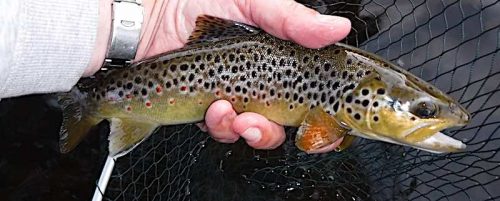
- 11 top trout fly patterns for May
Fishing Bishops Run from June to September:
When the river is low during the summer months, fast, oxygenated water flowing through Bishops Run is a good place to fish. On sunny days, this section of the river will continue to yield trout and grayling throughout the day, but the best fishing is early in the morning and after 5 pm.
More information on the fly selection for summer is covered in the following posts.
- 8 Great flies for June
- My top flies for July
- 9 trout & grayling flies for August
- 12 trout and grayling flies for September
Grayling fishing Bishops Run in October:
My attention turns to grayling fly fishing from October to the end of February on the Welsh Dee.
During autumn and winter, river conditions often dominate my grayling fishing activities and I will only fish in this pool if the river is running clear and the level is below 0.55m (Corwen gauge).
During October on the Welsh Dee, fly hatches are still common on most days. The flies you are likely to see hatching include:
- Iron Blue Dun
- Pale Watery Dun
- Olive Upright
- Egg laying Stoneflies
- Midges
October mornings tend to be cool and fly hatches don’t usually start until mid-morning and usually wait until then to fish Bishops Run, with the dry fly or Klink & Dink.
Ideally, it’s best to try and identify the flies that are being taken and tie on a suitable imitation.
If that is not possible, I usually start with a CDC olive emerger pattern that has served me well, and if that doesn’t work I start working through my fly box. However, it’s rare not to catch a grayling on one of the three following patterns:
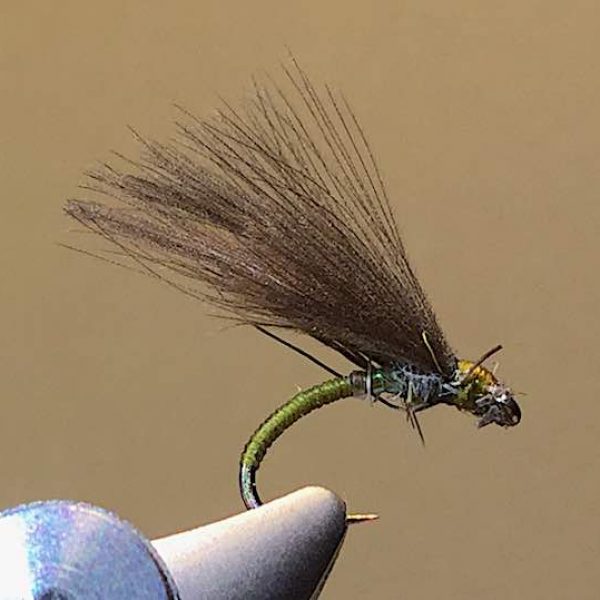
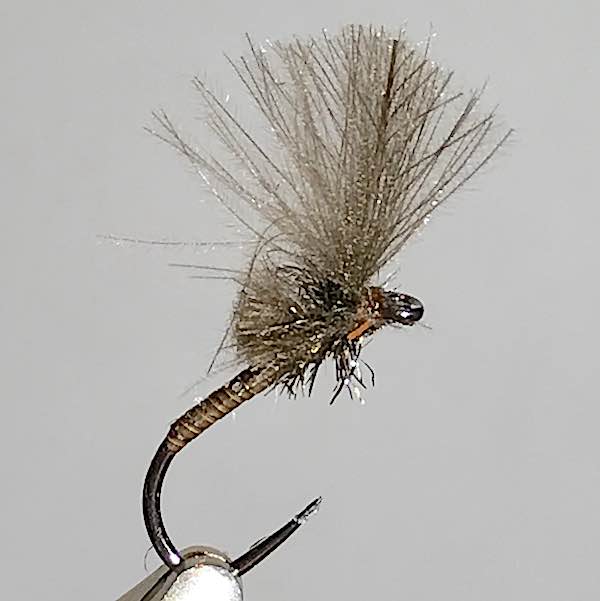

On rare occasions, it’s not possible to tempt grayling with either of the above approaches, it is necessary to switch to fishing nymphs close to the riverbed.
Check out the link below for additional reading on flies for October:
Fly fishing Bishops Run from November to February:
The clocks go back at the end of October and the days get increasingly shorter during November. At this time of year, the river is often too high to fish Bishops Run.
Therefore, with limited day-light hours, I often fish more productive pools where grayling have started to shoal:
For more information on the flies to use on the Welsh Dee during winter check out the following articles:
Fly Fishing for salmon and sea trout:
I have never fished Bishops Run for salmon and it’s probably something I should correct.
The deep channel (C to D) below the islands is a known salmon, and probably sea trout holding pool but it’s difficult to fish with the fly.
Over the years there have been many salmon caught there by anglers fishing prawns and worms.
How to get to Bishops Run:
From Llangollen take the A5 to Crown then just after the junction with the B5103 by Berwyn Station take the next right and park on the left alongside the railway.
Walk down the lane 50m, over the style on the right and down the steep path to the river. Bishops Run being directly in front of you. A map to this pool can be found on Llanfollen-Maelor Angling website.
Fishing, like most outdoor sports, is not without its hazards. Therefore, YOU MUST DO YOUR OWN RISK ASSESSMENT before starting to fish. Especially if you decide to wade and/or fish at night. In addition, you must follow the Llangollen-Maelor Club Rules when accessing and fishing this water.